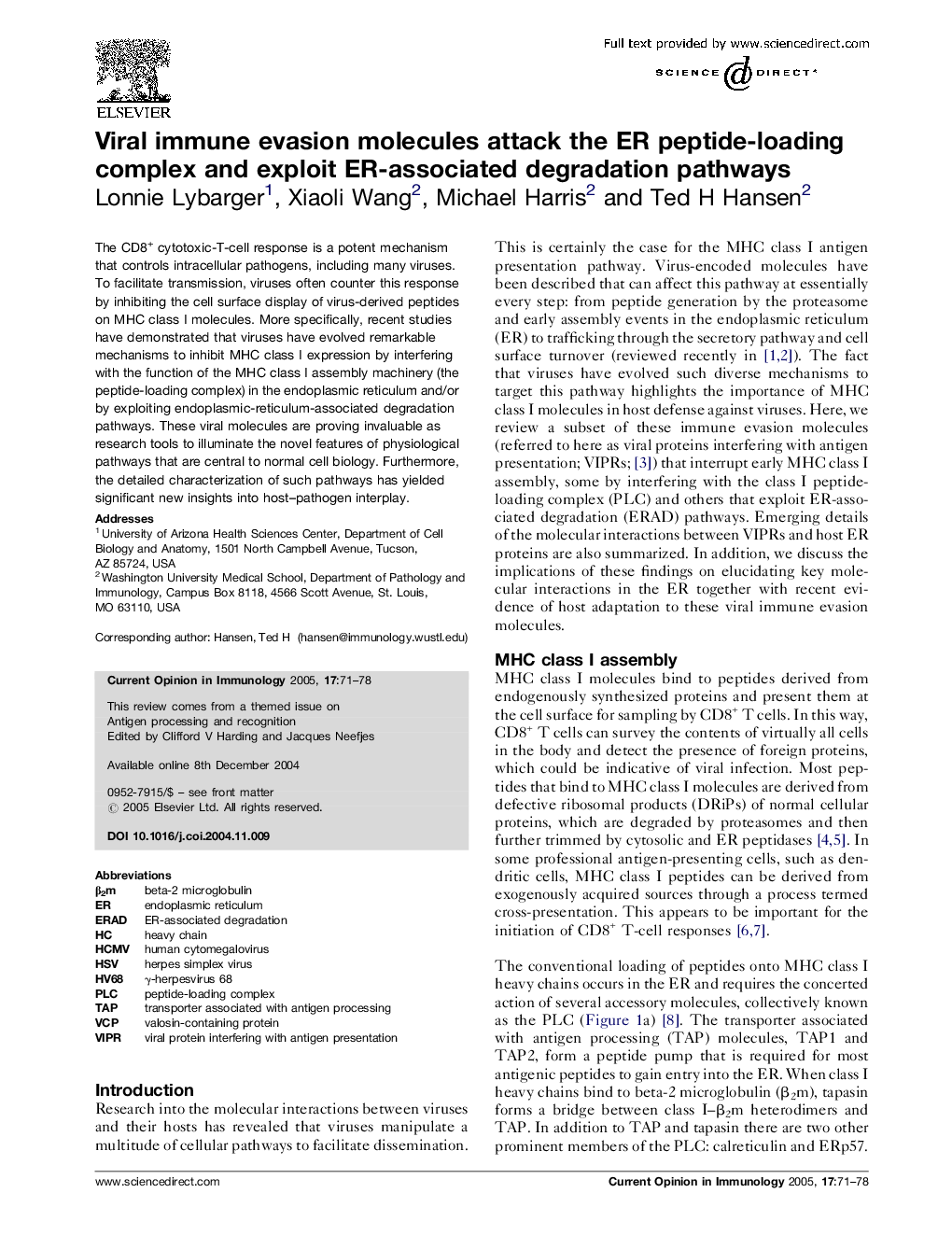| Article ID | Journal | Published Year | Pages | File Type |
|---|---|---|---|---|
| 9262897 | Current Opinion in Immunology | 2005 | 8 Pages |
Abstract
The CD8+ cytotoxic-T-cell response is a potent mechanism that controls intracellular pathogens, including many viruses. To facilitate transmission, viruses often counter this response by inhibiting the cell surface display of virus-derived peptides on MHC class I molecules. More specifically, recent studies have demonstrated that viruses have evolved remarkable mechanisms to inhibit MHC class I expression by interfering with the function of the MHC class I assembly machinery (the peptide-loading complex) in the endoplasmic reticulum and/or by exploiting endoplasmic-reticulum-associated degradation pathways. These viral molecules are proving invaluable as research tools to illuminate the novel features of physiological pathways that are central to normal cell biology. Furthermore, the detailed characterization of such pathways has yielded significant new insights into host-pathogen interplay.
Keywords
Related Topics
Life Sciences
Immunology and Microbiology
Immunology
Authors
Lonnie Lybarger, Xiaoli Wang, Michael Harris, Ted H Hansen,
